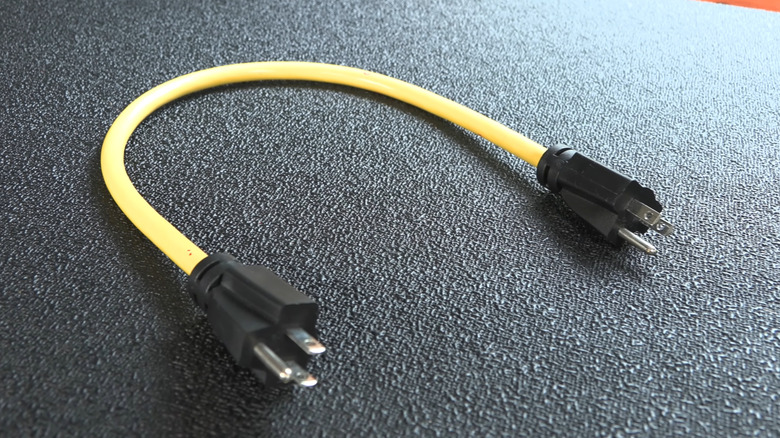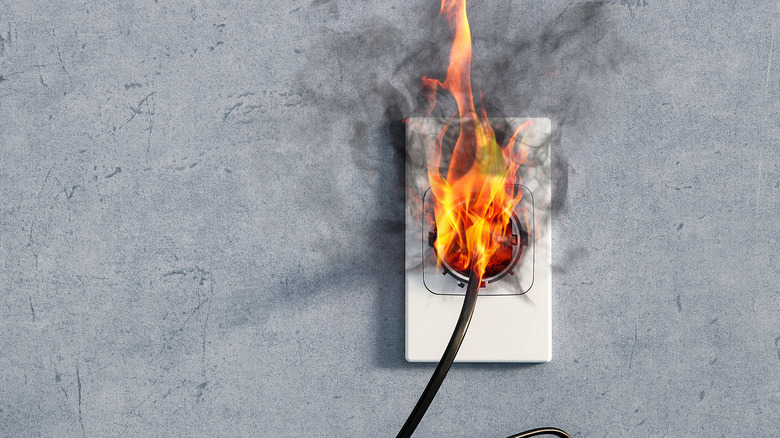What Is A 'Suicide Cord'? (And Why You Should Probably Never Plug One In)
Extension cords typically have one male end and one female end. However, on sites like Amazon, you might come across cables that have male connectors on both ends. These cables are extremely unsafe to use. That's because when you plug one end of a male-to-male cord into an electrical outlet, the other end of the cord becomes live. A three-pronged male-to-male cord can carry 120V, while a four-pronged one can carry up to 250V. Both voltages are high enough to cause serious injury or even death. That's why male-to-male extension cords are often called 'suicide cords.'
Of course, male-to-male cords aren't used for this purpose. They are primarily used to backfeed electricity from a generator into a home in case of a power outage. A male-to-male extension can be used to connect a generator to a wall outlet inside the home. This way, the electricity flows from the generator into the home's electrical system. While this setup may seem clever and safe, it is not a good solution for several reasons.
What makes male-to-male extension cords so dangerous?
Even if you are wearing the necessary protective gear, male-to-male cords can still be unsafe. And the danger is not just limited to the user. When you use these cables to power your home, electricity flows in reverse, not only to your home but also to the power lines. This puts the utility workers working on the power lines at risk. Additionally, if the power is restored while the generator is still running, it could damage the generator and even cause a fire. Simply put, using a male-to-male extension cord is a serious safety mistake that you should avoid while using a generator.
For these reasons, male-to-male extension cords do not comply with the US national electrical and fire safety codes. In fact, the Consumer Product Safety Commission (CPSC) has warned consumers against purchasing, selling, or using male-to-male extension cords. If you already have one, it's best to dispose of it immediately.
If you're worried about powering your home, there are much safer ways to survive a power outage than using a suicide cable. One of the best options is to install a transfer switch. It can automatically switch between the municipal power supply and the generator as needed to ensure a continuous power supply at all times.

